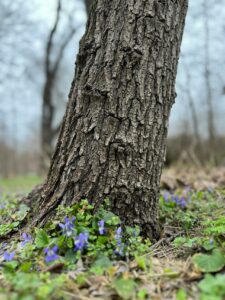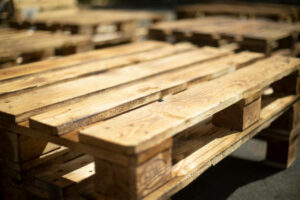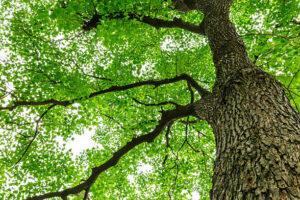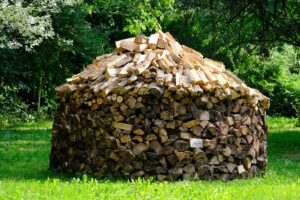For the average homeowner who wants to build a deck or erect a tree house for the kids, there are other alternatives to pressure-treated wood. These alternatives will protect your backyard projects from rot, insect damage, and leaching harmful chemicals.
Thermally modified wood is made by heating air-dried lumber to a high temperature, which reduces hygroscopicity and increases rot resistance. This new plastic lumber is the most promising alternative to chemically-treated lumber.
Naturally Rot-Resistant Woods
When building outdoor structures like decks, fences, or patio furniture, one of the main factors to consider is decay resistance or rot. Moisture, sun, and insects are what typically cause wood to deteriorate over time, but certain species of hardwoods are naturally unaffected by these threats. This natural rot resistance makes these species ideal for outdoor construction projects that will be exposed to the elements daily.
Cedar, redwood, and cypress are commonly hailed as the premier wood fiber choice when it comes to naturally rot-resistant lumber. While these species are indeed able to resist the ravages of moisture, insects, and fungi, they also have other qualities that make them an excellent choice for outdoor construction projects and outdoor applications. These woods are known for their beauty, pleasant aroma, and durability. Cedar is often used to shingle roofs and to build garden beds, while redwood is popular for decks and saunas.
These natural rot-resistant woods are extremely durable, lasting much longer than traditional pressure-treated lumber. They also have a natural silver-gray patina that enhances their aesthetic appeal. Additionally, they are resistant to termites and other common pests that can damage wood. While they do have a higher upfront cost than traditional pressure-treated lumber, their durability and low maintenance requirements will ultimately save you money in the long run.
It is important to note that even these rot-resistant woods are not universally rot-proof. The outer wood layers of these species are typically less rot-resistant than the deeper heartwood, which is rich in organic material. This is because the natural oils found within these species are what protect the wood cells within them from rotting. If you are looking for an alternative to traditional pressure-treated wood that is more rot-proof, look no further than Ipe, Cumaru, Garapa, and Jatoba.
If you are in the market for a naturally rot-resistant wood, check with your local lumber yard to see what is available in your area. You may also want to ask about options such as Accoya, which is a newer wood on the market that is essentially rot-proof. This wood is made from Radiata pine which is pressure-treated pine using a process called Acetylation.
This process chemically alters the wood to make it dimensionally stable, unattractive to insects, and extraordinarily rot-resistant. The preservatives that are used in this treatment process are less toxic than those used in pressure-treated wood and may be a good option for home gardeners who are interested in organic gardening. In addition to being rot-resistant, this wood is also incredibly durable, lasting longer than regular pressure-treated lumber and standing up well against harsh weather conditions.
Composite Lumber Made from Recycled Materials
Unlike real wood, which can easily crack and splinter, composite materials are strong enough to stand up to harsh weather and other environmental conditions. Composite lumber is also more cost-effective than traditional pressure-treated wood as it doesn’t require periodic staining, stain, and reapplication of sealers. The eco-friendly material is also durable, lasts longer than other natural woods, and resists humidity-induced buckling. It is free from chemicals and preservatives and can be recycled at designated facilities after use.
A wood-plastic composite (WPC) is a type of engineered wood that uses a blend of wood and plastic or polymer resins to create an alternative to traditional lumber for use in applications like decking, fencing-treated decks, and outdoor furniture. The composite material can be molded into different shapes and sizes and is often reinforced with additives to provide specific properties like water resistance and UV protection. The wood component of the WPC is typically in sawdust or small fibers and accounts for 50 to 70% of its weight. The remaining percentage of the product is made up of thermoplastics, which can either be derived from fossil fuel sources or sourced from renewable resources like cornstarch, sugar cane, and castor oil.
The sustainability of WPCs depends on how sustainable the timber used in them is, and their carbon footprint. The use of fossil-fuel-based thermoplastics increases the material’s carbon footprint, but biodegradable options like plant-based polyethylene and polyamides are available as well, reducing the environmental impact of these WPCs.
Wood-based WPCs can be a great alternative to wood, as they are sustainable and long-lasting, but not all manufacturers use sustainably harvested hardwoods. Sourcing wood for a WPC from tropical forests and other biodiverse regions can have negative ecological impacts due to unsustainable logging practices and deforestation rates.
While wood-based WPCs are a good option for many projects, some manufacturers are now using recycled plastics to make their products. The recycled plastics used in these products can be sourced from milk containers recycled plastic cans, coffee cups, and other recyclable plastic items. This helps reduce the amount of waste that is sent to landfills, and the recycled plastics are also stronger than wood, which makes them a good alternative for construction applications.
While wood-plastic composites are a good choice for projects in outdoor spaces where the wood surface will be exposed to the elements, they are not as suitable for structural applications. This is because WPCs can be susceptible to bending and warping in certain areas if they are exposed to direct sunlight, and they may not be as strong as conventional woods like cedar or redwood when it comes to resisting rot and insect infestations.
In addition, WPCs are often more expensive than other natural woods and can be less eco-friendly when sourced from biodiverse forests. They also tend to absorb water, which can lead to cracking and splitting, especially in humid environments.
Thermally Modified Wood
Wood is a natural, renewable resource that can be used for a wide range of applications like decking, fencing, and outdoor furniture. Unfortunately, it is susceptible to rot and decay when exposed to the elements. The industry has historically addressed this issue with chemical preservatives, such as pentachlorophenol (penta) and creosote. These chemical wood preservatives are effective, but they also create health and environmental concerns. Fortunately, there is another option: thermally modified wood.
The thermal modification process heats lumber to a high temperature to change its internal structure, making it more resistant to decay and easier to maintain. The heating process breaks down hemicelluloses, which are responsible for moisture absorption and can contribute to rot. By removing this component, thermally modified wood is less prone to rotting, and it can better resist insect infestations.
Additionally, the heating process makes the surface water of the wood more dimensionally stable. This means that it is less impacted by changes in humidity, which can lead to warping and swelling. Additionally, the heat process “cooks” out the sugars in the timber, eliminating a food source for mold and fungi. Thermally modified timber is a great alternative to chemically treated wood because it is more durable, rot-resistant, and has superior dimensional stability.
NRRI scientist Kelly Bartz has been working on thermally modified wood for several recent years, and she’s excited to see it becoming more popular in the market. “With the growing interest in sustainability and eco-consciousness, it is important to have alternatives that are cost-effective and don’t require the use of toxic chemicals,” she says.
With a lower carbon footprint than traditional pressure-treated wood, thermally modified timber is a viable substitute for exotic hardwoods that have a larger impact on the environment. This treatment process can be applied to a wide variety of native timber species, such as ash and poplar. And, because it can be made to resemble the look of exotic woods, it can discourage unsustainable deforestation of under-threat tropical hardwoods.
In addition to being a more sustainable material, thermally modified wood is also much cheaper than exotic hardwoods. This is because the manufacturing process for thermally modified timber is simpler than that of exotic woods, which requires more labor and equipment to produce. This reduced manufacturing cost leads to lower prices for consumers.
While many homeowners are now considering the benefits of using alternative materials to traditional pressure-treated wood, the question remains whether these new alternatives are as durable as the original product.






